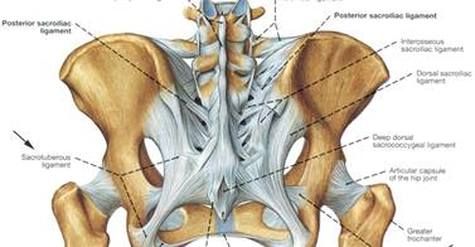Exercise for good posture, not good posing.
 Yogis need to take care, as many people are unknowingly damaging their body by doing yoga twists without honoring the spine’s natural structure, which is made of curves—not straight lines. The spinal column is a dynamic, flexible rod acting as a support structure for our body and nerves. The basic design is four opposing curves: neck, upper back, lower back and tailbone, allowing our trunk to flex, extend and twist. In positions without these curves, twisting movement becomes difficult, and flexibility comes at the cost of overstretched spinal ligaments, compressed or herniated discs and even compression fractured vertebrae. While most people are aware that one should avoid yoga twists when there is disc herniation or nerve impingement, many yoga twists require complex body positions that can reverse the curves of the spine, causing damage to an otherwise healthy body. The human spine consists of 24 vertebrae that vary in size, shape, and function, separated and cushioned by discs which help to create shock absorption to protect our joints as we move, as well as providing a framework to support our nerves. When we are born, we have a C shape to the spine that consists of one primary curve forwards, which makes it necessary to support a baby’s neck until he gets the muscle actions that create the spinal curves. As he begins to lift his head from the belly down position, extensor muscles in the back body from sacrum to skull, engage and create the secondary backwards curves of the lumbar (lower back) and cervical (neck area). For FULL article click HERE.
1 Comment
 The 20-some students were earnest, curious and right on board with our slower-than-usual approach to asana practice, and our emphasis on meditation and philosophy. I am inspired to know that this group of teachers is bringing their wisdom into the world of yoga. Early in the training, one student who had been teaching in a fitness studio asked a very important question. She explained that one of her female students became unusually flexible prior to ovulation (probably because of the presence of relaxin, a hormone that relaxes the ligaments that hold together the various joints in the pelvis—hip joints, sacroiliac joints and pubic symphisis). The teacher said that she encouraged the student to move farther into poses at that period in her cycle since she was already more flexible. “Should I continue doing this?” she asked. Twenty years ago I would have said yes. In fact, I did encourage women to take advantage of their relaxin-induced flexibility during pregnancy. No more. Fortunately, the third time I took anatomy the importance of understanding the structures of ligaments and tendons finally sank in. (For clarification, ligaments connect bone to bone in our joints; tendons connect muscle to bone at the joints.) Ligaments and tendons are constructed of dense, regular, collagenous, connective tissue. Ligaments are dense, fibrous tissues that are designed to limit the movement of our joints. Please repeat this three times: Ligaments are designed to limit the movement of our joints. This is also very important: ligaments and tendons are considered to be avascular, i.e. containing no blood flow of their own. Oxygen and other nutrients diffuse into ligaments and tendons from cells outside the tissues. Because these structures need to be strong, they are largely comprised of collagen fibers with some elastin to create a small amount of stretch. For full article click HERE.  "Anityasuciduhkhanatmasu nityasucisukhatmakhyatiravidya" (What at one time feels good or appears to be of help can turn out to be a problem; what we consider to be useful may in time prove to be harmful.) -- From Patanjali's Yoga Sutras, written in Sanskrit approximately 2,400 years ago. As a 40-year yoga practitioner, with over two decades practicing massage therapy and teaching yoga, I have seen countless injuries, chronic pain and joint issues in yoga clients of every age and fitness level. My work and investigations with yoga injuries has revealed certain yoga poses engage the body in positions that are unnatural for the design of the human body. In this series of posts, I will explain why these poses need to be radically modified or eliminated to protect yoga practitioners from finding out that which was considered to be useful may in time prove to be harmful. The sad truth is that years of practicing body positions that do not simulate real life function can lead to misalignment, chronic pain, and even surgical replacements. To be smart and safe in yoga, we need to consider postural alignment and natural joint function, rather than blindly following a list of "must-do" traditional poses and boot camp challenges. To read full article from YogAlign inventor, Michaelle Edwards click HERE. |
ArchivesCategories |
 RSS Feed
RSS Feed